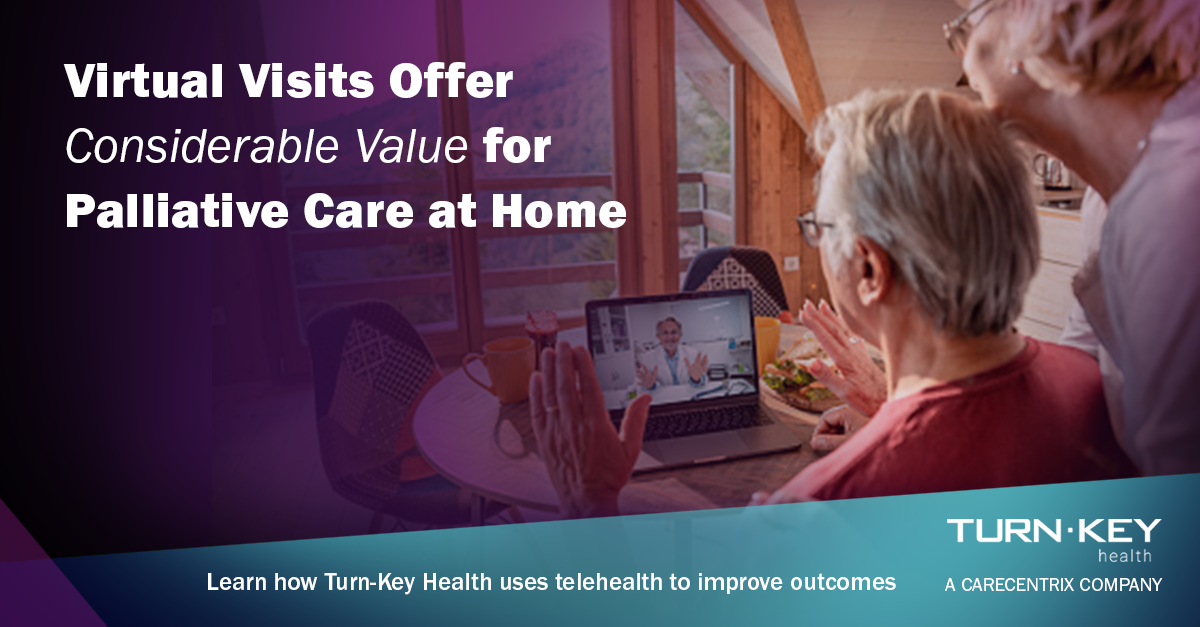
The widespread adoption of telehealth during the COVID-19 pandemic has demonstrated its value for establishing, implementing and informing a plan of care for home-based, seriously ill patients and their caregivers. Telehealth, the provision of health care remotely using telephones and mobile devices with or without video, enhances population health management by connecting patients and caregivers to the services and support they need which helps to improve the overall experience and outcomes.
Telehealth also extends clinical reach by providing care when and where it’s needed to reduce missed appointments; provide access to specialists regardless of location; limit patient and caregiver travel time, expense and time away from work; improve outcomes through timely care and immediate access to the care team; relieve caregiver burden, and promote greater patient/caregiver and provider satisfaction.
Virtual visits are a supplement to in-home visits that offer considerable value for hospice and palliative care organizations.
Benefits of Telehealth
Hospice and palliative organizations are finding that telehealth can provide an important way to connect with patients and their caregivers, especially for those who live far away or are too ill to attend a clinic or office appointment. Virtual visits increase patient access to providers and can almost double the number of patient visits to significantly decrease the lead-time to initial consult.
Telehealth also makes it more efficient to assess symptomatic patients because it dramatically reduces the time commitment required for an in-person visit. Virtual visits are useful for conferencing with team members and other health care providers, providing coaching to caregivers, and conducting case management meetings and hospice interdisciplinary meetings.
Before the COVID-19 pandemic, clinicians for Turn-Key Health (TKH), a CareCentrix company, performed about 40% of its visits in the home, with the remainder by phone. During the height of the pandemic, home visits were temporarily halted and the team switched to phone and video visits.
Today, we have returned to performing home visits. While we strongly advocate for the importance of face-to-face visits, we continue to use virtual visits as an essential way to provide ongoing support for patients and caregivers.
Telehealth should not be regarded as a compromise on palliative and hospice care for the seriously ill, but rather—for many patients, caregivers and providers—an option that may be safer, more comfortable and less time-consuming for patients. One study of outpatient palliative care telemedicine visits resulted in 8.9 out of 10 satisfaction level for patients and 8.8 out of 10 for caregivers. Another study examining patient and caregivers use of telehealth in rural and remote areas – with a focus on people with chronic conditions, parents with young children and caregivers of elderly patients — found 67% satisfaction for reducing inconvenience and cost of travel, absenteeism from work and family, and dependence on caregivers for transport or childcare.
Overcoming Barriers for Patients
Despite the advantages that telehealth provides, it remains out of reach for many individuals. People who have hearing, vision or cognitive impairments may not be able to participate, depending on the equipment they can access. For instance, a visually impaired person may struggle to use a phone, or a hearing-impaired patient may require home visits.
Additionally, some people can’t afford or are unable to operate a smart phone or computer — or they may live in an environment with poor Wi-Fi connection and may not have access to video visits. This especially affects low-income patients, which raises concerns about CMS halting reimbursement for telephone-only visits post-pandemic.
Therefore, it is important to provide care using whatever method is best for the patient, whether by phone, video or in person and not let technology be a barrier.